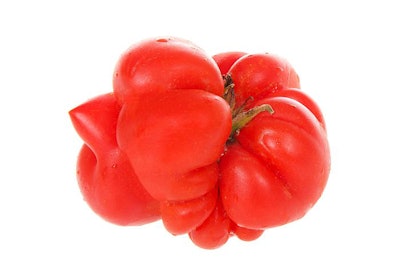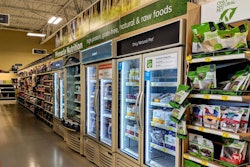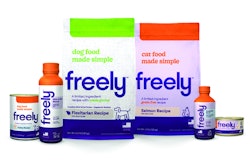
Many pet food ingredients naturally classify as sustainable, though the industry historically has not done a good job of explaining that to pet owners or retailers. I’m thinking namely of meat by-products, which unfortunately, were demonized starting about a decade ago (including by some pet food brands) and still have a consumer misconception to overcome that they are unsafe, poor quality and not nutritious for dogs or cats. (In fact, the exact opposite is true.)
In recent years, as consumers have become more interested in sustainability and even start to expect it from the brands they buy, we’ve seen more sustainable pet food and treat ingredients marketed as such. For example, the F.L. Emmert Co., one of several companies that supplies brewers yeast—a good source of protein, including some amino acids—to the pet food industry, has begun talking about the sustainability inherent in the ingredient.
“Because liquid yeast is a co-product from well-known American brewers, made and sourced in the USA, the supply chain is very stable and consistent,” said Dr. Tom Asquith, Emmert’s director of research and development, in a September 2020 promotion. That helps make the ingredient economically sustainable, he claimed. “Brewers yeast is also an ecologically sustainable co-product of the food industry, so there’s no waste. You and I get a tasty beer, pets get a high-protein nutritional supplement, and nothing gets landfilled.”
Other, higher profile examples come from pet treats. For its treats, Shameless Pets finds ingredients from the human food supply chain that would otherwise likely go to waste—lobster shells, eggshells, “ugly” apples and other fruit—and uses them as core ingredients. This concept, often called upcycling, has started to gain traction as many industries, organizations and people become concerned about food waste and its contributions to climate change, hunger and other problems.
Insect protein, recovered foods as pet food ingredients
As alternative proteins like insects become the focus of research and regulatory efforts, we may hear and read more sustainability stories like those of brewers yeast and upcycled ingredients. Though approved for use in pet food in the European Union, insect protein is still being evaluated for approval as an ingredient by the Association of American Feed Control Officials in the U.S.; its proponents are hoping for that to happen in 2021. If it does, one of the key marketing claims will be its low carbon footprint resulting from less use of land, water and other resources, including what’s used to feed the insects before harvesting them (typically organic waste from livestock or the human food stream).
In addition, more upcycling examples are in the works. On January 11, 2021, Kemin Industries, a global ingredient manufacturer, announced it is partnering with CSS, a provider of sustainable food recovery technology, to explore upcycled groceries for sustainable pet food ingredients. Kemin Nutrisurance, the company’s division supplying antioxidants, palatants and other ingredients to the pet food market, will “utilize CSS’s patented Harvest to Harvest technology that the company introduced—and has perfected—to collect and repurpose recovered food from supermarkets and other food-recovery partners,” read a press release. That recovered food may include unsold fruit, vegetables and meats.
Can consumers figure out which products are sustainable?
While all of this sounds encouraging, none of these new ingredients will succeed in the marketplace if consumers don’t understand their benefits and accept, let alone demand them. In a 2020 survey of consumers, the International Food Information Council Foundation found that almost 60% said it is important the foods they buy or eat are produced in an environmentally sustainable way, as reported by Jeff Gelski in Food Business News Daily. Across generations, the percentages of respondents saying they consider sustainability always or most of the time when shopping for foods and beverages was fairly consistent; overall 19% said always and 36%, occasionally.
The downside? More than 60% also said it was difficult to ascertain whether the foods they were considering or buying are indeed environmentally sustainable. Further, 70% of those respondents said if they could more easily know the sustainability of products, it would influence their decisions.
So it appears human food companies also have trouble telling their sustainability stories, and unfortunately, there are no easy answers or solutions. Of course, brands can—and do—make sustainable claims, but that doesn’t mean consumers understand or believe them (hence those high percentages of survey respondents who said they can’t tell if products are truly sustainable).
Gelski mentioned known symbols such as the Fair Trade Certified seal, though I would question how many consumers understand what that means—and how many brands can afford to attain such certification or justify its cost, especially given uncertainty over its market impact.
A small company like Shameless Pets can at least partially tell its story through its name, which probably leads consumers to ask, and possibly investigate, what the “shameless” part means. In this case, the company started with that name and story as its core mission and business model; established companies and brands may not have that option.
Tell your own sustainability story
I don’t have answers either, I’m afraid, though this seems to be an area where the industry could come together, brainstorm and collaborate for the good of everyone. Meanwhile, the demonization of meat by-products offers a cautionary tale, and one that the industry can blame at least partly on itself.
By-product usage should be a significant sustainability story for the pet food industry, said Elizabeth Barber, executive vice president for Emmert, yet people in the industry take for granted that others know the same. “That may be where this disconnects starts,” wrote my colleague, Tim Wall, after interviewing Barber in 2020. “Consumers have heard a different story about by-products from marketers, bloggers and others. The by-product, co-product and rendering industries, along with pet food brands, must tell this sustainability story. Otherwise, people will believe what they read wherever.”
In other words, be sure to tell your own story before someone else tells it for you, very possibly not to your liking.



















